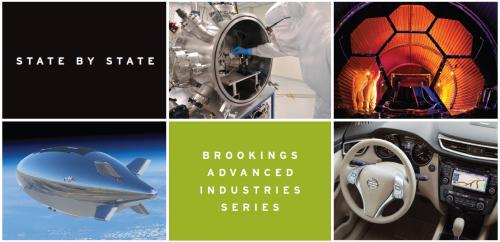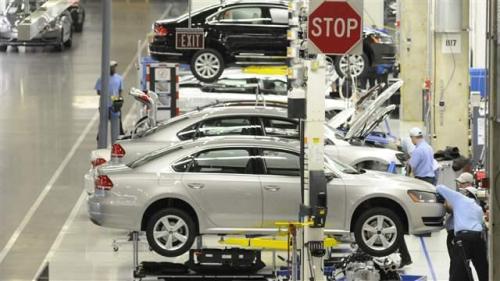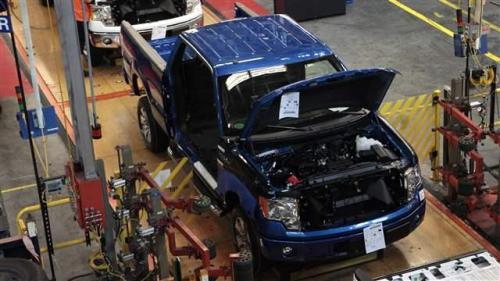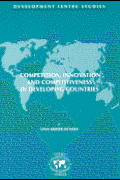Another weak jobs number prompts some big questions, such as what are the industries that matter most to quality employment and U.S. competitiveness? And which are the ones that will pull the nation out of its economic funk and generate the next era of broadly shared prosperity?
Arguably, what matters most is a swath of 23 R&D and STEM intensive industries that we and our colleagues at McKinsey & Co. call America’s “advanced industries” (AIs).
Extremely varied, ranging from appliance manufacturing to software development, these industries anchor America’s technology innovation, employ fully one-third of the nation’s engineers, and produce nearly as big a share of the nation’s exports.
What do AIs look like? Earlier this month we released a new strategy report on the Tennessee auto sector—a classic AI. And in February we analyzed the Colorado space industry. Examined side by side, these contrasting regional clusters, on first impression, look extremely different. Where the Tennessee auto industry is busily cranking out consumer goods for mass consumption in North America, the Colorado space industry is for the most part producing one-off, highly specialized satellites and launch vehicles largely for governments.
Yet, beyond their superficial differences, the Tennessee auto and Colorado space in several ways resemble each other in ways that demonstrate the defining characteristics of the AI “super-sector.”
To begin with both industries are anchored by extremely dense, complicated supply chains. This is a distinguishing aspect of AIs in general. In Tennessee, over 80 percent of auto workers are employed by one of the 500 auto suppliers that specialize in any number of the over 2,000 components in the modern automobile. In Colorado’s space industry more than one-third of employment resides in a broad range of supply or support industries. These industries represent a complex blend of aerospace component manufacturers and IT, research and scientific services that augment the state’s satellite services such as DISH Network. And in both industries, nimble coordination between the state’s suppliers and original equipment manufacturers (OEMs) is the linchpin for product and process innovation. Stimulating those place-based synergies is the name of the game in constructing AI advantage.
Another perhaps surprising similarity between the Colorado and Tennessee industries is the radically changing workforce demands each faces. In both the space and auto sectors, new technologies and processes are requiring workers to adopt myriad new skills. Deploying complex advanced materials such as magnesium and carbon fiber requires workers who have the engineering skills to work with new methods of joining and interfacing, while electric steering modules implies mechanics need vastly more electrical engineering skills.
Also, information technology now pervades both industries. Consider that the control system of a Chevrolet Volt contains more than 10 million lines of software code while the Lockheed Martin F-35’s fighter jet’s sophistication turns not just on speed and thrust but also on teraflops and bandwidth as it connects and coordinates with soldiers, satellites, weapons, and other planes on the battlefield. No wonder the AI sector hires more software engineers and integrators than traditional software and computing players, as Daniel Pacthod and Michael Park of McKinsey & Co. observe. With code ubiquitous in these industries virtually everyone will need some computer science training.
And finally there is the fact that both the space and automotive sectors—like all AIs—depend on constant innovation. Innovation determines competitiveness in both industries. Colorado’s space economy is becoming less government sponsored and more entrepreneurial. For that reason, Colorado space firms need to develop cheaper, better, and faster new product offerings that leverage the state’s strong advantages in satellite services so as to sell to new private-sector customers. Meanwhile, technology and process innovation may even be more important in the auto industry, which is still often considered a mature “old manufacturing” enterprise. New emission and safety standards, coupled with consumer demand for myriad infotainment options, are predicted to add $3,000 of additional content to each auto by 2020. And then there is the coming revolution of automated control.
No wonder OEMs and their supply chains in both Colorado and Tennessee are racing to deliver on the technology imperative. If they fail they will lose out.
The landscape is similar for all 23 of the advanced industries we’ve identified. Ranging from space and auto to semi-conductors, pharmaceuticals, software, and medical devices, all of America’s AIs face similar challenges as they are all dependent on vibrant, synergistic supply chains, smart workers, and innovation.
All of which implies—despite the industries’ differences—a clear agenda for regional and federal policy. Smart cluster initiatives are needed to bolster the density and synergies of regional supply chains. Dynamic, bottom-up collaborations are needed to deliver strong sector-based, industry led regional STEM worker training systems, region-by-region, and state-by-state. And finally, robust public and private investments in the cross-cutting technologies relevant to all AIs will go a long way to improve America’s global competitiveness. In that sense, while there are 23 advanced industries, there is a single set of needed responses for advancing all of them.








Commentary
From Satellites to Cars, Advanced Industries Matter
October 24, 2013